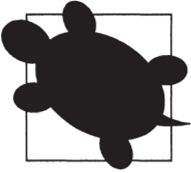
Bendy Trees
How Do Tree Rings Help Trees Not Break?
Materials
- a piece of wood with exposed tree rings
- a paperback book
- a hand lens (optional)
Try This
- Look at the rings in the piece of wood. Notice how dark-colored rings alternate with light-colored rings.
- Hold the book parallel to the floor between your fingers, midway along the binding, letting the pages droop. Twist your wrist slowly to rotate the book. Notice how the pages adjust.
What's Going On?
Trees add material to their trunks in rings each year. Each pair of light and dark rings represents a year of growth. The light rings grow in the spring, when there is lots of water. The dark rings grow in the summer/fall, when there is less water. That's why the dark rings are narrower, since they grow slowly, and they have less spaces in the wood (which gives them a darker color), making this wood stiff. The lighter rings are wider, since they grow quickly, and they have more spaces in the wood (which give them a lighter color), making this wood more flexible. Like the twisting book, whose pages can slide past each other, the alternating stiff and flexible wood rings allow the trees to bend in the wind more easily, without breaking.
